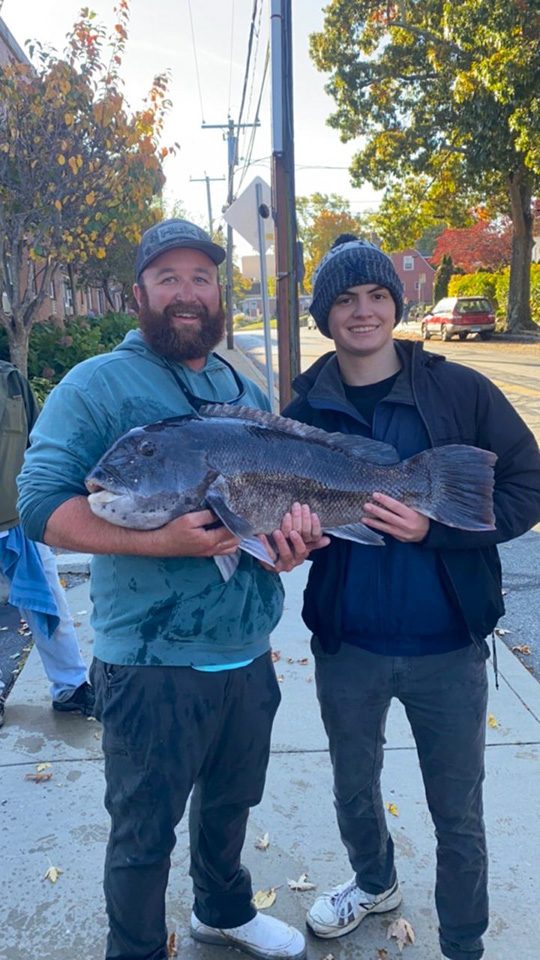Taugzilla is what they’re calling the new Connecticut catch-and-release state record. Angler Aiden Cole caught this 36-inch, 25.78-pound tautog aboard the Melissa Ann with Capt. Luke Wiggins in the Thames River using green crab as bait. The big fish was later released after being weighed and measured.
This is the second catch-and-release record ’tog caught aboard Capt. Wiggins’ boat. He caught the previous record, a 32.5-inch, 24-pounder, himself back in 2020.
Tautog, commonly called blackfish, range from Nova Scotia to Georgia but are most common between Cape Cod and the Chesapeake Bay. They make inshore/offshore migrations triggered by water temperature. In spring, as the water temperature approaches 48 degrees, adult tautog migrate closer to shore to spawn, where they remain through the summer until water temperatures drop below 52 degrees in the fall. Fall is well known as the best time to fish for these bottom dwellers. They fight hard and are ton of fun on light tackle.
Tautog prefer to aggregate around structure. As juveniles, they use shallow estuaries with vegetation such as eelgrass as nurseries, moving into deeper waters to join the adults as they grow. Adults utilize rocky outcrops, boulders, jetties and other similarly complex habitats for shelter. They select a home site, from which they may stray during the day to feed, returning at night to become dormant and possibly sleep. Tautog are slow growing and can live to 35–40 years old.
Coveted among marine anglers, tautog are hard fighting, tough on tackle, and excellent on the table. They are one of the first species available to anglers in the spring and one of the last still available in the fall. April is a particularly rewarding month, along with fall months when tautog are concentrated in greatest number along the shorelines.
Tautog fishing is open until November 28. Anglers can harvest three fish per day with a minimum length of 16 inches.
